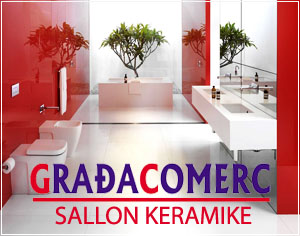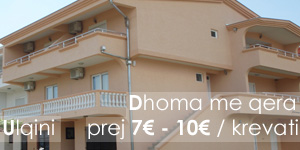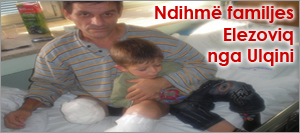Montenegro – ‘the Jewel in the Balkan Crown’
The world’s youngest sovereign state is ripe for investment
In 2007, for the fourth consecutive year, the World Travel & Tourism Council (WTTC) ranked the Republic of Montenegro as one of the top three destinations in the world in terms of forecast travel and tourism growth over the ensuing decade. And preliminary estimates put Montenegro in second position in the growth ranking for 2008, behind Macau – the Special Administrative Region of China.
To be ranked alongside Asian powerhouses such as China and India is no mean feat for a country whose tourism industry ground to a complete halt during the 1990s as a result of the Balkan conflict.

Since WTTC produced its first Tourism Satellite Account and Country Report for Montenegro in April 2004, Montenegro – the world’s youngest independent nation – has demonstrated that it is well on the way to fulfilling its tourism promise. Although the destination really only re-emerged onto the world’s tourism stage at the end of the 1990s, when its tourism plant was still suffering from years of neglect due to international sanctions during the Balkan conflict – Montenegro was never directly involved in the war itself – international tourist arrivals and tourism receipts have recorded strong double-digit annual increases.
A solid recovery in tourism demand
After recording a growth in international arrivals of 45% in 2005 and 39% in 2006, 2007 saw a further 22% rise – nearly six times the average for Europe overall. And total tourism revenues rose by an even more impressive 39%, according to the Central Bank of Montenegro.
Growth has in part been stimulated by an extension of the tourism season since the beginning of the decade – to nearly nine months of the year from less than five – and hotel performance, as a result, has far exceeded expectations, despite the rapid growth in hotel room capacity. Room revenues in renovated four-star hotels, for example, topped €23,000 (US$34,155) per room in 2007, and gross operating profit (GOP) increased from 20.3% of total revenues in 2006 to 32.2% last year. In addition, more and more airlines are operating direct airline services into the country from key markets, facilitating access and thereby stimulating demand.
The trends are a clear reflection of Montenegro’s strong tourism recovery and its enormous potential for the future. Leading Western markets have returned to the country’s coastal resorts and new emerging markets are starting to show interest in what has become widely known as the ‘jewel in the Balkan crown’. True, the unique ‘wild beauty’ of Montenegro is still a long way from being tapped. But the country has an wide range of natural attractions – mostly in unspoilt terrain – including mountainous regions covered by forests, lakes, rivers and national parks, which boast some of Europe’s most spectacular scenery. Together with its rich diversity of flora and fauna, Montenegro offers unparalleled opportunities for ‘authentic’ tourism – one of the fastest growing segments in tourism today. And investment in mountain accommodation, such as ecolodges, is now gaining speed.
Growing investment in infrastructure and tourism facilities
More than 95% of Montenegro’s existing hotels have already been privatized and, during the past five years, private investors have poured close to €400 million into extensive renovations and modernization, including the addition of state-of-the art wellness and conference facilities, in a dozen or so large privatized hotel and resort complexes. At the same time, the Montenegrin Government has invested more than €250 million in the modernization and upgrading of airports, roads, border crossings and utility infrastructure projects. And this is only the beginning.
Agreements signed with international organizations such as the World Bank, the International Monetary Fund and the European Bank for Reconstruction and Development, as well as with national aid agencies and donor organizations, will ensure the upgrading and expansion of water supply systems, waste water treatment, landfills and similar critical infrastructure.

Europe’s new Monaco
Since independence, in 2006, the value of real estate has soared, making Montenegro one of the most attractive destinations in the world, not just in Europe, in terms of return on foreign direct investment (FDI). In fact, Montenegro is among the top three countries in Europe in terms of FDI per capita. Many now see this small Adriatic state as the new Monaco. In 2007, FDI exceeded €785 million (US$1.17 billion).
Moreover, while the country still only has a handful of five-star hotels, interest from developers in building high-quality resorts is growing rapidly, and competition for good sites is rife. In addition to existing properties available for renovation, some 12 Greenfield sites of a total 4,000 hectares, are being offered by the government for hotels and mixed-use developments. Negotiations are underway with a number of international hotel groups, and several big projects have been signed, which will see the arrival of new international hotel brands in Montenegro, such as Kempinski.

Among the most important developments, a deal was concluded in October 2006 with Peter Munk (one of Canada’s leading industrialists and the chairman of the world’s largest gold producer, Barrick Gold) for the purchase of a former shipbuilding and naval yard once controlled by the Yugoslav Army, at a superb location on Kotor Bay with easy access to Tivat airport. Work has already started on the development of a major marina and related resort infrastructure in the coastal town of Tivat.
One of the world’s most respected hotel groups, Aman Resorts, also signed a landmark agreement for a 30-year lease of the former fisherman’s village of Sveti Stefan, once a favourite summer haunt of the rich and famous, as well as two adjacent properties – the Villa Milocer, a former royal villa, and the Queen’s Beach Hotel. The first two will be operated by Aman Resorts, and Queen’s Beach will become a GHM property after a complete rebuild. Four beaches are included in the US$40 million (US$59.4 million) deal. Milocer is due to open in 2008 and the other two resorts in 2009.
In total, more than €500 million (US$742.5 million) has been committed for modernizing six additional hotel complexes and for the construction of the Peter Munk-led marina and upscale mixed-use resort complex. This level of investment will clearly pave the way for more similar projects, helping Montenegro transform its tourism product from that of a low-yield, mass-market destination to one offering the highest quality for customers and the highest yields for investors.
Ensuring a competitive business environment…
The Montenegrin Government adopted a Tourism Master Plan in 2001, developed by the Ministry of Tourism and Environmental Protection in conjunction with the German Investment and Development Company (DEG) and German tourism experts. Although the Master Plan has now been revised and updated – mainly to ensure a balance between coastal resorts and development in the less well-known mountain areas – the government lost no time in implementing measures designed to stimulate and facilitate tourism development and to attract foreign direct investment (FDI) into the country.
Apart from the privatization of former state-owned hotels and other tourism assets, measures have included the implementation of an open skies policy and the establishment of a competitive business environment. As an example, corporate tax has been reduced – with investors enjoying the right to repatriate all tourism earnings – a special VAT rate for tourism has been introduced (7%), and there are attractive terms available to tourism investors for borrowing. In addition, efforts have been stepped up to diversify Montenegro’s tourism products and markets, to assess human resource needs over the foreseeable future, and to work more closely with local/municipal authorities, educators and the private sector.

Inter-ministerial dialogue and consultation have improved significantly, and all stakeholders take part in regular meetings to address issues of interest and concern to travel and tourism. Many of these are chaired by Montenegro’s Prime Minister, reflecting a hands-on approach from the highest levels of government.
… and sustainable tourism development
The Ministry of Tourism and Environmental Protection, which was established in 2006 – adding responsibility for the environment and sustainable development to the Minister of Tourism’s portfolio – also enjoys strong support from donor agencies and non-governmental organizations (NGOs). These have contributed significantly over the past four years to the development of Montenegro’s sustainable tourism strategy, as well as advising on sectoral and regional development and undertaking practical and technical projects.
All this has played an important role in stimulating interest in FDI in Montenegro’s tourism, especially since one of Montenegro’s perceived strengths in terms of an FDI haven are its political stability and sound economy. Business confidence has also been boosted by the country’s strong macro-economic indicators and the appreciation of real-estate values in Montenegro since the country’s independence from Serbia. It is hardly surprising that the country is now rated as one of the most attractive destinations in the world, not just in Europe, in terms of return on FDI.
While the last few years have demonstrated some of the potential benefits of tourism to the country’s economic progress, the government has recognized that, if it is to make its full contribution across the country in the coming years to job creation and wealth generation – particularly within the smaller communities in the more remote mountain regions – it must take the lead in unlocking the industry’s full potential.
Montenegro is a small country and it recognizes that it cannot afford to make the mistakes that other destinations in Europe, including some of its neighbours, have made. It is important that tourism growth is sustainable – environmentally, socially and economically.






